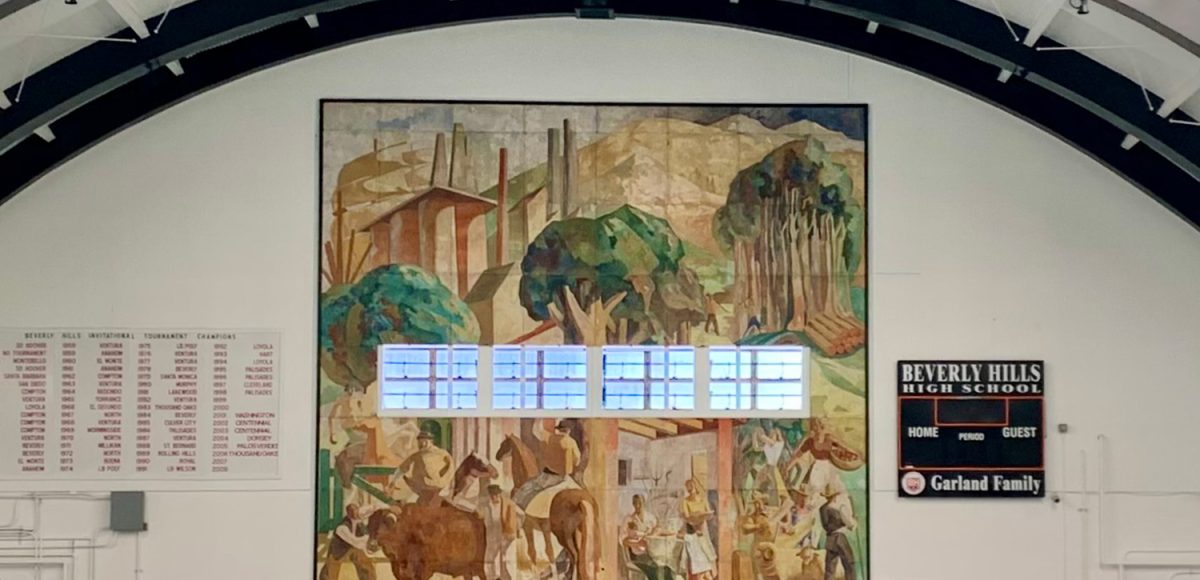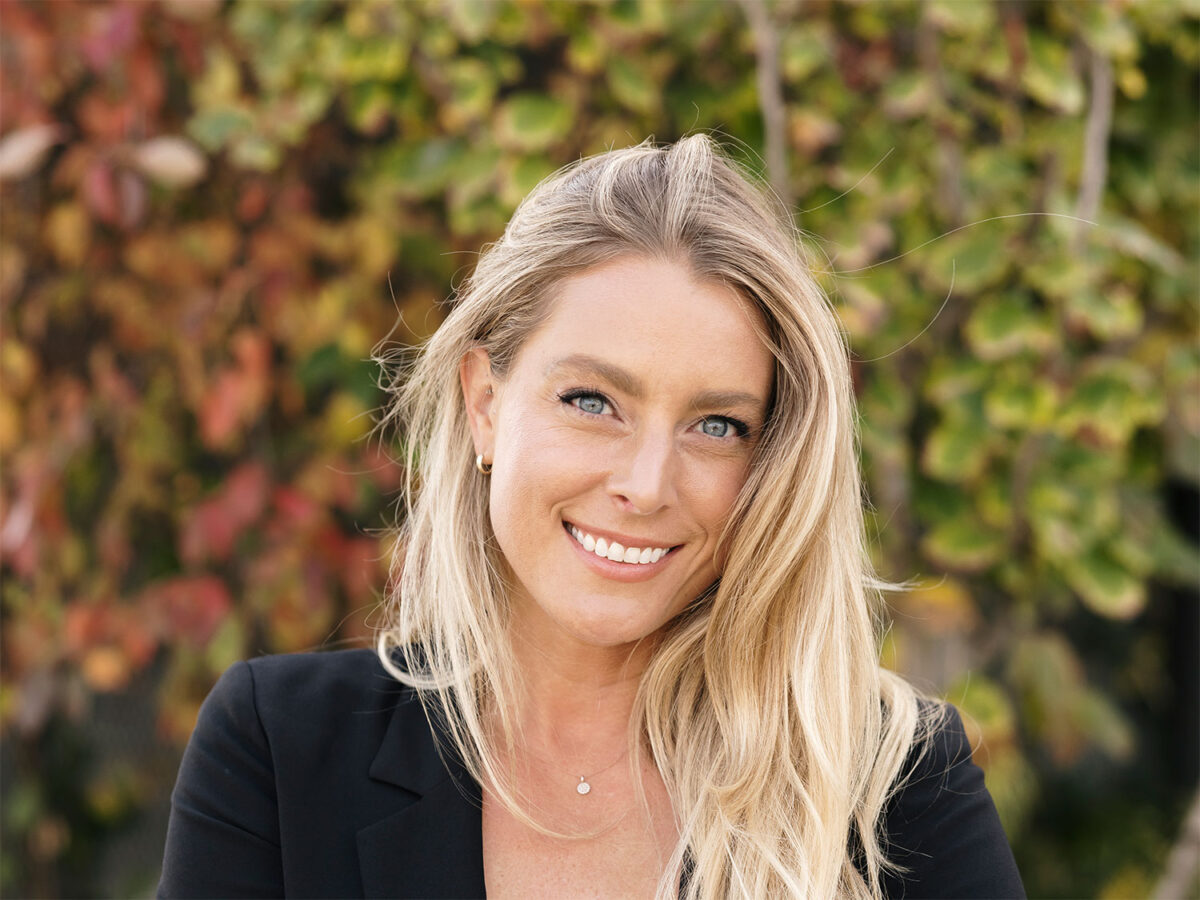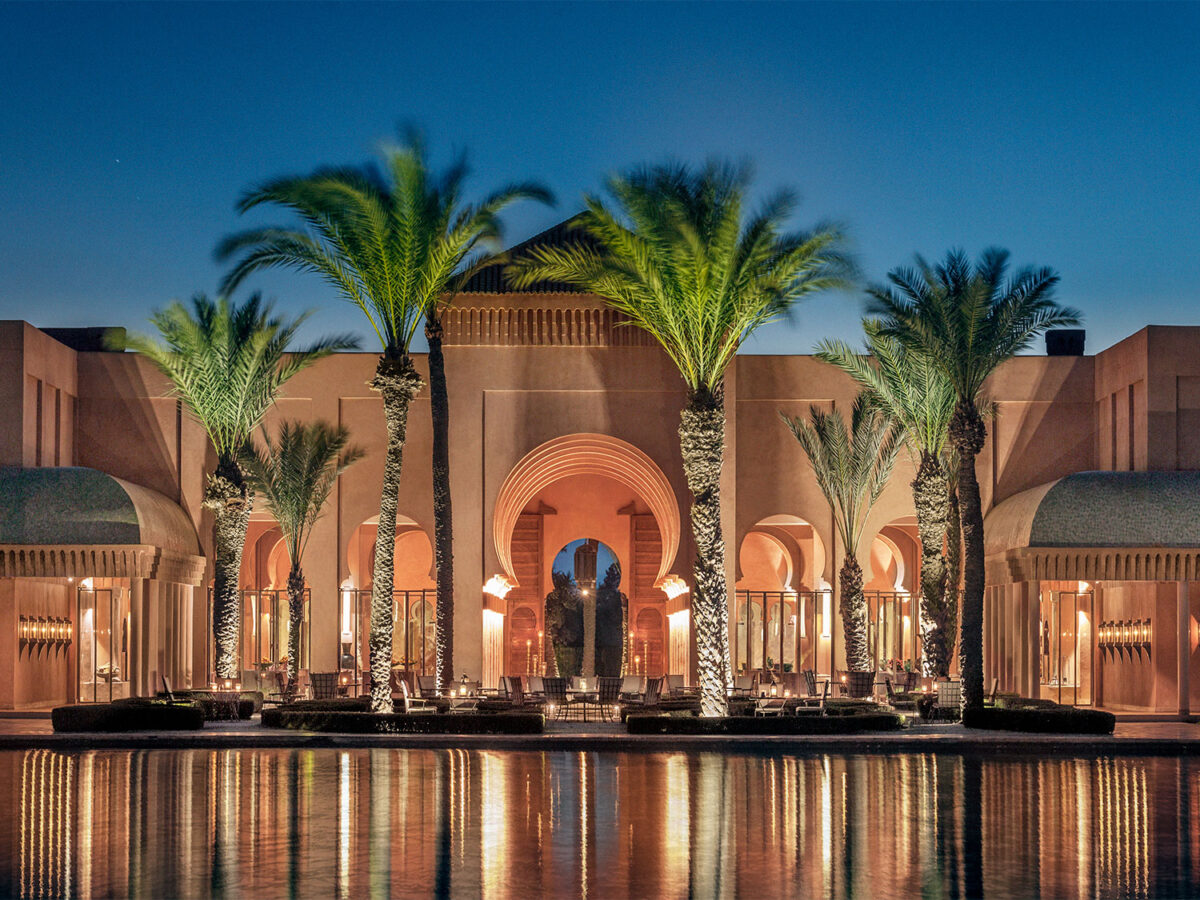At its Aug. 24 Special Meeting, the Cultural Heritage Commission reviewed the historic mural adorning the eastern wall of the infamous swim gym located inside the Konheim Athletic Building at Beverly Hills High School. Painted in 1938 by Argentinian artist Ernesto Scotti, the mural has been long thought of as being created as part of the Works Progress Administration (WPA) program created under the Franklin D. Roosevelt administration.
In the late 1930’s, Scotti had initially traveled to San Francisco to create a mural for the Golden Gate International Exposition held at San Francisco’s Treasure Island, but was subsequently engaged to undertake a project creating a mural in the gym. Made in 1938 on upwards of 30 canvas panels, the piece depicts scenes of ranch and farm life with horses, sheep, and cattle and has been considered as a nod to early agrarian years in Beverly Hills.
With renovations underway at the swim gym and decades of exposure to chlorine, talk of potentially covering, restoring, or moving the celebrated mural has raised concerns in the community. With that, the Cultural Heritage Commission has come on to help find a viable solution for the piece.
The Beverly Hills Unified School District (BHUSD) Board of Education has preliminarily considered covering the mural and moving it elsewhere, intact, to allow more wall space for school memorabilia from sporting tournaments in the gym. However, no decision has been made regarding the mural, its restoration, covering, or removal at this time.
According to Mark Odell, urban designer for the city of Beverly Hills, BHUSD staff is considering other locations for school memorabilia in conjunction with the construction of an additional school facility, Building C.
However, during the meeting, vice chair of the Cultural Heritage Commission, Kimberly Reiss, raised questions. “I’m not sure that this mural was part of the WPA project in California,” Reiss said. “It is not on the list of New Deal artwork.”
“If you look carefully at the mural, what we think might be early California, I think is more likely, Argentina,” Reiss said. “And if you look at the people and what they’re wearing, it would seem to point in that direction. This is purely speculative on my part, but I do believe that it’s depicting early Argentina commerce, and there’s horses and rams and a family.”
Reiss also voiced concerns about possible chlorine damage to the piece from years of being housed above an Olympic sized swimming pool. “I don’t think it was intended to be in a room that had a lot of chlorine,” Reiss added. “In order to save this piece, I would personally be open to relocating. I know that’s not Kosher in preservation, but I believe that the work of art is more important than its location.”
Her findings sparked questions about the mural’s historical relevance to the community, too.”There’s also evidence that Scottie, among other artists, created many murals for the Argentine pavilion at the Golden Gate Expo,” Reiss said.
“Scotti won awards for the murals that he completed in that pavilion,” Reiss added. “And I personally am led to believe that, after that Expo was completed, they didn’t have a place for this mural, and therefore it was offered to the community.”
The Golden Gate International Exposition opened in October of 1939 and ran through May of 1940 to celebrate the city’s two newly built bridges: the San FranciscoOakland Bay Bridge and the Golden Gate Bridge. The swim gym at Beverly Hills High School was built in 1939. Commissioners hypothesized, given the overlapping dates and the size of the mural, few structures were big enough to house such a piece, making the gym an ideal location.
“It may be worth preserving, and maybe we can find some place that’s big enough,” Chair Craig Corman said. “I mean, it’s been there all these years, so it’s certainly part of our culture. But it’s interesting that it wasn’t original, or may not have been original, to the design, and may not even depict what everyone thought it depicted all these years.”
While no action was taken on the matter, staff and commissioners have been tasked with uncovering the true origins of the mural before making any recommendations directly to the school board for future review. The next Cultural Heritage Commission meeting will be held on Oct. 13.







